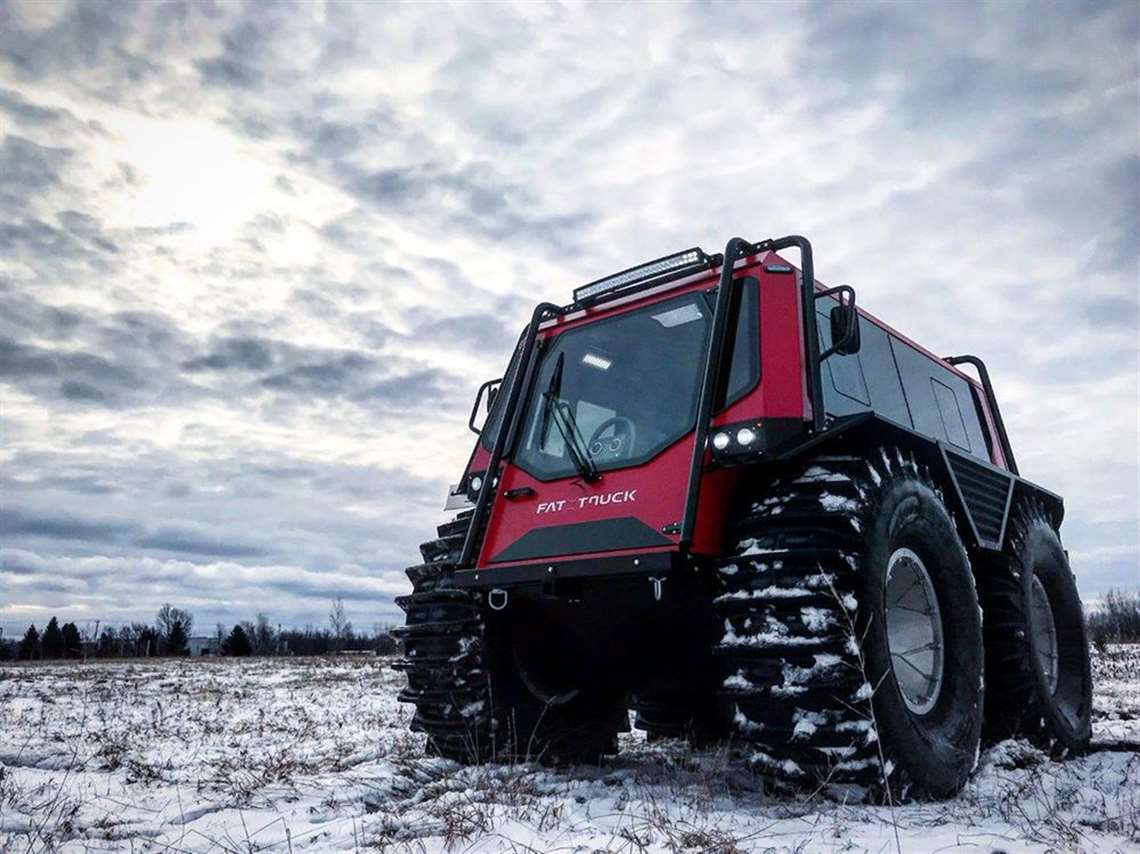Fat Truck uses Cat diesel power to go anywhere it wants
14 January 2021
Picking up where pickups stop: Innovative Uses of Horsepower
A customer of Zeal Motor recently told co-founder Amine Khimjee that their new industrial off-road utility vehicle saved him $10,000 a day. Khimjee was riding with that customer in Minnesota as they inspected power lines that ran above swamp forests far from any roads. The customer explained the flooded areas they were crossing usually required a helicopter that cost thousands of dollars to put in the air. The added benefit to the Zeal Motor’s Fat Truck, he said, was that they could also bring a crew and tools.
For the casual observer, that might be a surprising review of a machine that looks like a grown-up version of one of the best radio-control models ever designed. To Khimjee and anyone else who’s sat behind the center-mounted joystick of a Fat Truck, it’s no surprise at all.

“We started this project three years ago,” said Khimjee, vice president of Sales & Marketing for the Bromont, Quebec, Canada, manufacturer. “Throughout my career I’ve travelled a lot to pipelines, power utilities, telecommunication towers and wind farms. One of the biggest needs of the market was to transport people on job sites, and there was no easy solution. People use pickups, side-by-sides and school buses. When it’s messy, there is no way you can transport people like that. It’s impossible. My customers were always asking me how to transport people overland.”
With decades of experience in the off-highway vehicle market, having worked for several well-known original equipment manufacturers and suppliers, Khimjee and business partners Maxim O’Shaughnessy and Benoit Marleau set out to develop a solution. The team launched its first product, the Fat Truck 2.8 C, in January 2019. With tires 5 ft. high, a nearly imperceptible wheelbase and a maximum speed of 25 mph, the amphibious truck can hold up to eight people inside its ROPS-certified cabin. Or it can be outfitted to carry equipment such as a welder or generator thanks to its 2200 lb payload rating.
“We’ve defined the Fat Truck as an industrial off-road amphibious utility vehicle. It is an extension of a pickup truck,” said Khimjee. “Every job site has pickups, and the Fat Truck picks up where the pickup stops. It continues through any terrain.”
Toromont, Cat Support
Power for the vehicle – one with an appearance that has been described as “beefy” – comes from a mid-mounted Cat C.2.2 turbocharged diesel, a Tier 4 final 2.2 L four-cylinder engine rated 67 hp (50 kW). Toromont, the Caterpillar dealer for eastern Canada, helped with the engineering process with its factory-trained engine technicians and dedicated OEM account team. Inside the cabin, the engine can be accessed by removing cowling that is sealed and insulated to keep water, heat and noise at bay. A large fan keeps cooling air moving. Power is sent through a hydrostatic transmission that provides independent control of each side via two pumps and a carbon belt system on the left and right sides. An onboard air compressor can inflate the specially made 1640 x 640 x 610 low-ground pressure tires from 0 psi to 5 psi in 17 seconds.
For stability, the Cat engine sits in the frame low and amidship. Engine placement was one of the challenges they had to overcome in engineering, said Khimjee. They wanted to keep the vehicle’s width at 100 in. so it could easily be trailered and pulled behind a pickup. “To get the flotation we wanted, we needed a certain width of tires. They are 24 in. wide, which meant we already had 4 ft. just in tires. The dimensions of the Cat engine meant it would fit between the wheels and gave us an engine that is recognized worldwide to be a robust and a reliable engine.”
“The primary markets we’re targeting,” said Khimjee,” are the industrial companies working on pipelines, power lines and wind farms, and the secondary markets are the mining or search and rescue operations.”
While the Fat Truck has found a job travelling where few people choose to walk, let alone drive, it’s also found favor as a big toy. “There’s a ranch in Texas that owns 10 of them, said Khimjee. “When his friends come over, they take them out and go hunting with them.”
Written by Chad Elmore, this article was originally published in the December 2020 issue of Diesel Progress.
STAY CONNECTED




Receive the information you need when you need it through our world-leading magazines, newsletters and daily briefings.
POWER SOURCING GUIDE
The trusted reference and buyer’s guide for 83 years
The original “desktop search engine,” guiding nearly 10,000 users in more than 90 countries it is the primary reference for specifications and details on all the components that go into engine systems.
Visit Now
CONNECT WITH THE TEAM










